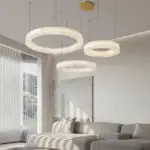Are you interested in understanding the various types of theodolite used in surveying? Learn how this field has developed over time and discover its modern applications. Join us as we take you on a journey through the history of theodolites, their types, and current uses.
Theodolites have been used in surveying for centuries, beginning as early as the 16th century. Land surveyors first utilized them to accurately measure angles and distances so as to create maps and plans. With time, however, theodolites have evolved into tools widely employed today in construction, engineering, and other fields requiring precise measurements.
In surveying, there are various types of theodolites with their own distinct features and applications. Let us examine them in greater depth:

Types of Theodolite
Transit Theodolite: This type of theodolite is the most widely used today. It consists of a telescope that rotates around both horizontal and vertical axes, enabling measurements of both horizontal and vertical angles. Transit theodolites are often employed for topographical surveys, construction projects, and engineering endeavors.
Digital Theodolite: Digital theodolites use electronic sensors instead of traditional transit theodolites to measure angles and distances. This makes them more precise and efficient than their analog counterparts, plus they can be connected to a computer or tablet for convenient data collection and analysis.
Vernier Theodolite: An older type of theodolite that uses vernier scales to measure angles. Although less precise than modern theodolites, they remain popular in applications where high precision is not necessary.
Laser Theodolite: This type of theodolite utilizes laser beam technology to measure distances and angles. They’re often employed in construction and engineering projects where high accuracy is needed.
Total Station: Total stations combine the advantages of a digital theodolite and electronic distance measurement device, making them ideal for surveying, construction and engineering projects. They accurately measure angles, distances and heights with high precision.
Advancements in the Field
Now that we’ve discussed different types of theodolites, let’s take a look back at some historic advances in this field. One major development was the electronic theodolite development in the 1960s – this new type was more precise and efficient than previous models, leading to digital theodolites today.
Tips
If you plan to use a theodolite in your surveying work, here are a few tips that can help ensure accurate results. First, ensure the theodolite is level before taking any measurements. Secondly, use the correct type of theodolite for your application. Finally, always double-check all measurements for assurance.
Like Us on Facebook!
Conclusion
Theodolites have become an essential tool in surveying, with their range of uses increasing over time. By understanding the types of theodolites available and their uses, you can make an informed decision about which one to use for your project. Surveyors, engineers, construction professionals – everyone relies on accurate measurement with these essential tools!






















